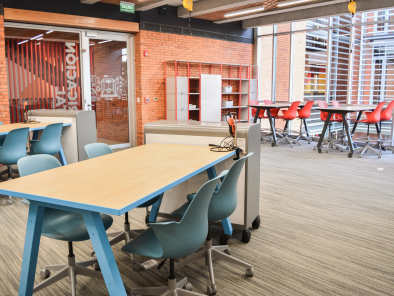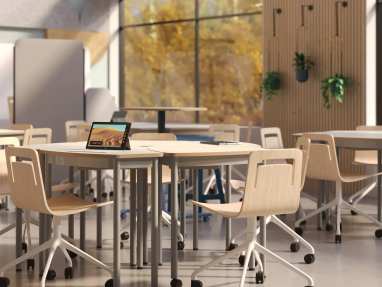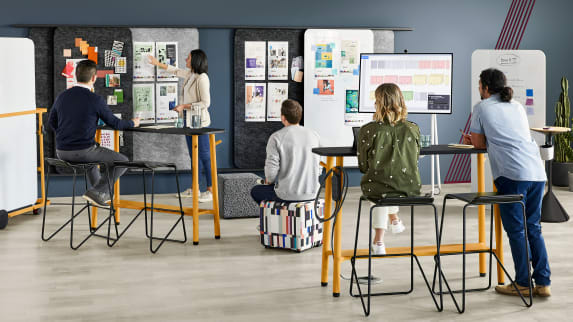Highly engaging classrooms design can seamlessly support many modes of learning with integrated technology and tools that facilitate class instruction, small-group collaboration, independent reflection, discussion and more.
Classroom Insights
When classrooms are designed for participative, active and engaged learning, they offer experiences that help students and educators function at their best—cognitively, physically and emotionally.
These classrooms support:
- Person-to-person and hybrid connections
- Easy interactions
- A variety of teaching methods
In the hybrid era, students are more engaged than ever in what and how they learn. As a result, more educators are seeking to create experiences that engage students through discussions, problem solving, group projects and other methods. Classrooms must offer a great variety of settings and resources to support all the different ways learning happens today.

.
With better design, layout, and fixtures, learner-centered classroom design can improve both student and educator engagement, fostering skill development and deeper relationships that help everyone succeed in their learning experiences. Browse a selection of classroom layout ideas to inspire your space.
Research + Insights

Building the Classroom of the Future
How one university is using Steelcase Education classrooms to prepare students for a rapidly changing world.

Helping Kuwait University Students Learn in a Better Way
How a classroom is designed and furnished can significantly improve how educators teach and how students learn.

Unlocking True Potential at the Colegio Japonés Paraguayo
How flexibility and collaboration allow students to reach their full potential.

Indiana University, Microsoft + Steelcase Explore Hybrid Learning
Our experts share how hybrid is changing the ways people learn and what they are doing about it.
Classroom Spaces
Today’s classrooms need to support many types of learning: blended learning, active learning, large active learning, personalized learning, flipped learning, immersive learning, creative learning and hybrid learning.
Our team of Learning experts is looking forward to your message!
Explore More Learning Spaces

Libraries + learning commons
Libraries and Learning Commons form the beating heart of the campus. They have a major influence on the atmosphere and identity of learning institutions and are greatly valued by educators and students.

Faculty + administration spaces
Faculty and administration spaces are highly specialized workplaces and need and deserve attention. Because the wellbeing and efficiency of these teams and individuals are key to the success of the whole institution.

Inspiring a life of learning
Learning is how we explore our boundless potential and connect to the world around us. At Steelcase Learning, we inspire a life of learning by creating places that engage and ultimately empower people, within and beyond the classroom.














